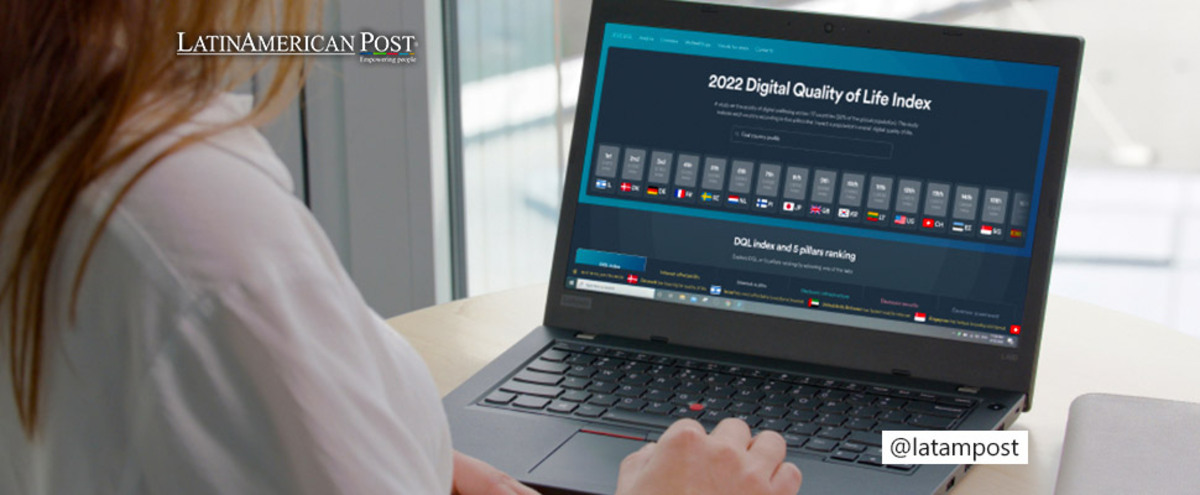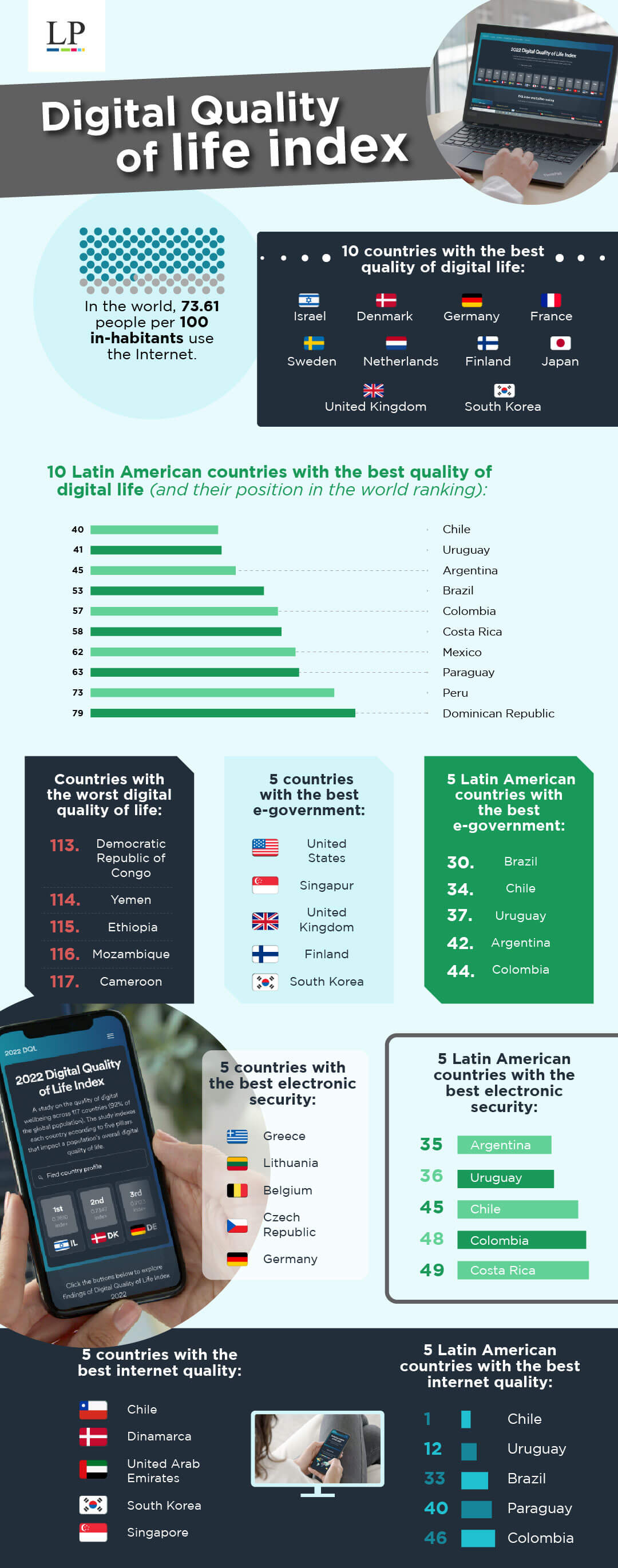Infographic: Digital Quality of Life How is Latin America?
Today, access to digital technologies and services provides many facilities to people. However, there needs to be more access and quality. We tell you about the world situation, and in the Latin American region.

Photo: surfshark
LatinAmerican Post | María Fernanda Ramírez Ramos
Escucha este artículo
Leer en español: Infografía: Calidad de vida digital ¿Cómo está Latinoamérica?
The Digital Quality of Life Index is a tool used to measure the general well-being of people concerning their use of digital technologies. It was developed by the telecommunications company Surfshark, a cybersecurity company. Five main categories are measured in this index: internet affordability, internet quality, electronic infrastructure, electronic security, and electronic government. These pillars have 14 indicators that help measure the digital quality of life. For example, the cost of telephone data plans or internet at home.
You can also read: Living longer is not always living better: aging in Latin America
The study analyzes 117 countries. However, there is a notable difference between regions. One of the most exciting pillars is that of electronic government. According to this index, "better e-government helps minimize bureaucracy, reduce corruption, and increase transparency within the public sector." It also improves the efficiency of public services and makes it easier for people to access them. We tell you more about the data provided by the index:

The Digital Quality of Life Index (DQL Index) is a helpful tool for governments, academics, and the civilian population to find out how a country is developing digital services that allow for the well-being of people. In this sense, it can be used to identify areas in which it is necessary to intervene to achieve a successful digital transformation and close the gaps of inequalities




